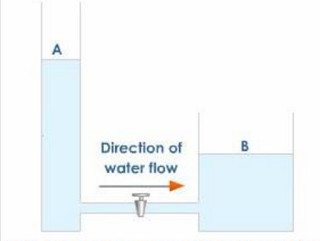Question 1 How much work is done in moving a charge of 2 Coulombs, from a point at 118 Volts to a point at 128 Volts?
Question 2 Name the device used for measuring potential difference?
Question 3 What are the conditions under which charges can move in a conductor?
Question 4 How will you maintain a potential difference between the ends of a conductor?
Question 5 What is potential difference?
Electric potential and potential difference
Consider a body on which some electric charge(say positive)is deposited. Such a body is known as positively charged body and process of adding electric charge on a body is called charging the body.
Let us add some more positive charge on body. Then these extra positive charge are repelled by the positive charge already on the body more and more. This work done on the charges to make the body more and more charged is stored as electric potential energy.
Electric potential is defined as work done on per unit charge.
V= W/q
S.I. unit of electric potential is Volt.
1 volt = 1 Joule/1 Coulomb
The electric potential is said to be 1 volt if 1 joule work is done in moving 1 coulomb charge.
Electric potential is a scalar quantity.
Electric Potential difference
a) Water level in A is greater than water level in B.
b) Pressure exerted by A is greater than pressure exerted by B.
There is pressure difference between arm A and B.
If we open the valve then water flows from A to B due to pressure difference.
Flow of water continues till water level in both the arms become equal.
Water flows from higher pressure to lower pressure.
The electrons in a wire flow from one end to other of wire if there is electric potential difference between the ends of conductor.
The electric potential difference across the ends of a conductor is maintained by dry cell or battery.
The chemical reaction taking place in a cell makes on electrode of cell as positive and other electrode as negative.
When conductor is connected to electrodes of the cell, then one end of conductor is at positive potential and other end at negative potential.Thus there is an electric potential difference across the ends of conductor. This electric difference moves the electrons in conductor from one end to other.
V=W/It
Voltmeter is used to measure electric potential difference.
Resistance of an ideal voltmeter is infinite.
Voltmeter is connected in parallel across a wire.
The electric potential difference is the cause of electric current.


Leave a Reply